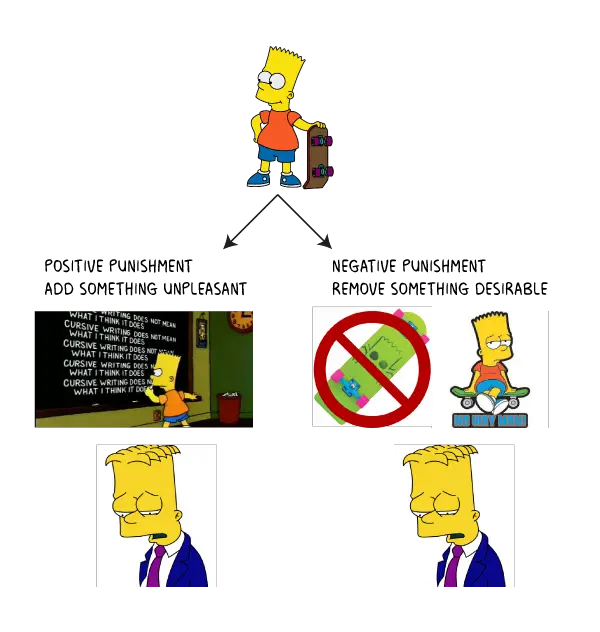Learning
Learning is a relatively permanent change in behavior that occurs through experience.
How Do We Learn?
- learning that certain events occur together
Classical Condition
- The type of learning in which a response naturally elicited by one stimulus becomes to be elicited by different formally neutral stimulus
- Pavlov and Watson
- USC, UCR, CS, CR
Operant Conditioning
- The type of learning in which behaviors are emitted to earn rewards or avoid punishment
- B.F. Skinner
- Reinforcement and punishment
Social Cognitive Learning Theory
- The type of learning in which behaviors are learned by observing a model
- Albert Bandura
- modeling and vicarious learning
- an involuntary behavior is determined by what precedes it
Unconditioned Stimulus (US): A stimulus that naturally and automatically triggers a response
Unconditioned Response (UR): The unlearned, naturally occurring response to the UCS
Classical Conditioning: neutral stimulus (something that by itself elicits no response)
Conditioned Response: originally neutral stimulus (NS) that after, association with the UCS, comes to trigger a response
Conditioned Response (CR): the learned response to a previous neutral stimulus
- the responses (UR & CR) are always the same
- The NS and CS are always the same
- The NS becomes the CS through learning
5 Critical Principles Are:
Acquisition
- we know learning exists because the CS is linked to the USS
- the CS should come before the USC
- they should be very close together in timing
- learning is better when the UCS and CS occur together frequently
- learning is better when the CS is new or unique
Extinction
- acquisition doesn't last forever
- the moment the CS is no longer associated with the USC, we have extinction
- Reconditioning: the quick relearning of a CR after extinction
Spontaneous Recovery
- sometimes, after extinction, the CR still randomly appears after the CS is presented
Generalization
- sometimes is so similar to the CS that you get a CR
Discrimination
- something so different to the CS you do not get a CR
Operant Conditioning
- The learner is NOT passive
- learning bases on consequences
- A type of learning in which behavior is strengthened, it is followed by a punishment
 Classical vs. Operant
Classical vs. Operant
Classical:
- behavior is determined by anticipation of what FOLLOWS it
- voluntary
- dog sits in anticipation of getting a treat
They both use acquisition, discrimination, spontaneous recovery, generalization, and extinction
Law and Effect
- Thorndike's principle the responses are "stamped in" by rewards and "stamped out" by punishments
Shaping
- is reinforcing small steps on the way to the desired behavior
Reinforcer
- any event that strengthens the behavior it follows
- 2 types: positive and negative
Positive Reinforcement strengthens a response by adding a stimulus after a response
Negative Reinforcement removes something unpleasant that was already in the environment following a behavior, making that behavior more likely to occur again (think avoiding/escaping)
Punishment
Meant to decrease behavior
Positive Punishment:
- addition of something unpleasant
Negative Punishment:
- removal of something unpleasant
Punishment works best when it's immediately done after behavior and if it harsh
Types of Reinforcers
Primary Reinforcer
- An innately reinforcing stimulus
Secondary Reinforcer
- A stimulus that gains its reinforcing power through its association with a primary reinforcer
Token Economy
- every time a desired behavior is performed, a token is given
- they can trad token for a variety of prizes (reinforcers)
- used in homes, prisons, mental institutions, and schools
Continuous vs. Partial Reinforcement
Continuous:
- Reinforce the behavior EVERY TIME the behavior is exhibited
- usually done when the subjects is first learning to make the association
- acquisition comes really fast
- but so does extinction
Partial:
- Reinforce the behavior only SOME of the times it is exhibited
- acquisition comes more slowly
- but more resistant to extinction
- FOUR types of partial reinforcement schedules
Fixed Ratios
- provides a reinforcement after a set number of responses
Variable Ratios
- provides a reinforcement after a random number of responses
- is very hard to get acquisition but also very resistant to extinction
Fixed Interval
- requires a SET amount of time to e;apse before giving the reinforcement
Variable Interval
- requires a random amount of time to elapse before giving the reinforcement
- Albert Bandura and his BOBO doll
- we learn through modeling behavior form others
- observational learning + operant conditioning = social learning theory
Latent Learning
- Edward Toleman
- latent meas hidden
- sometimes learning is not immediately evident
Insight Learning
- some animals learn through the "ah ha" experience

It's really interesting to see how the different types of learning and conditioning are applied to our real lives. I think once you learn about all these aspects, it allows you to open your eyes to the underlying ways of the world.
ReplyDeleteToken economy is the act of using a certain number of "tokens" that are earned by desired behaviors and using these tokens in exchange for a prize or form of payment. In your opinion, do you think this method is effective? If so, what environments are they most successful in and why?
ReplyDelete